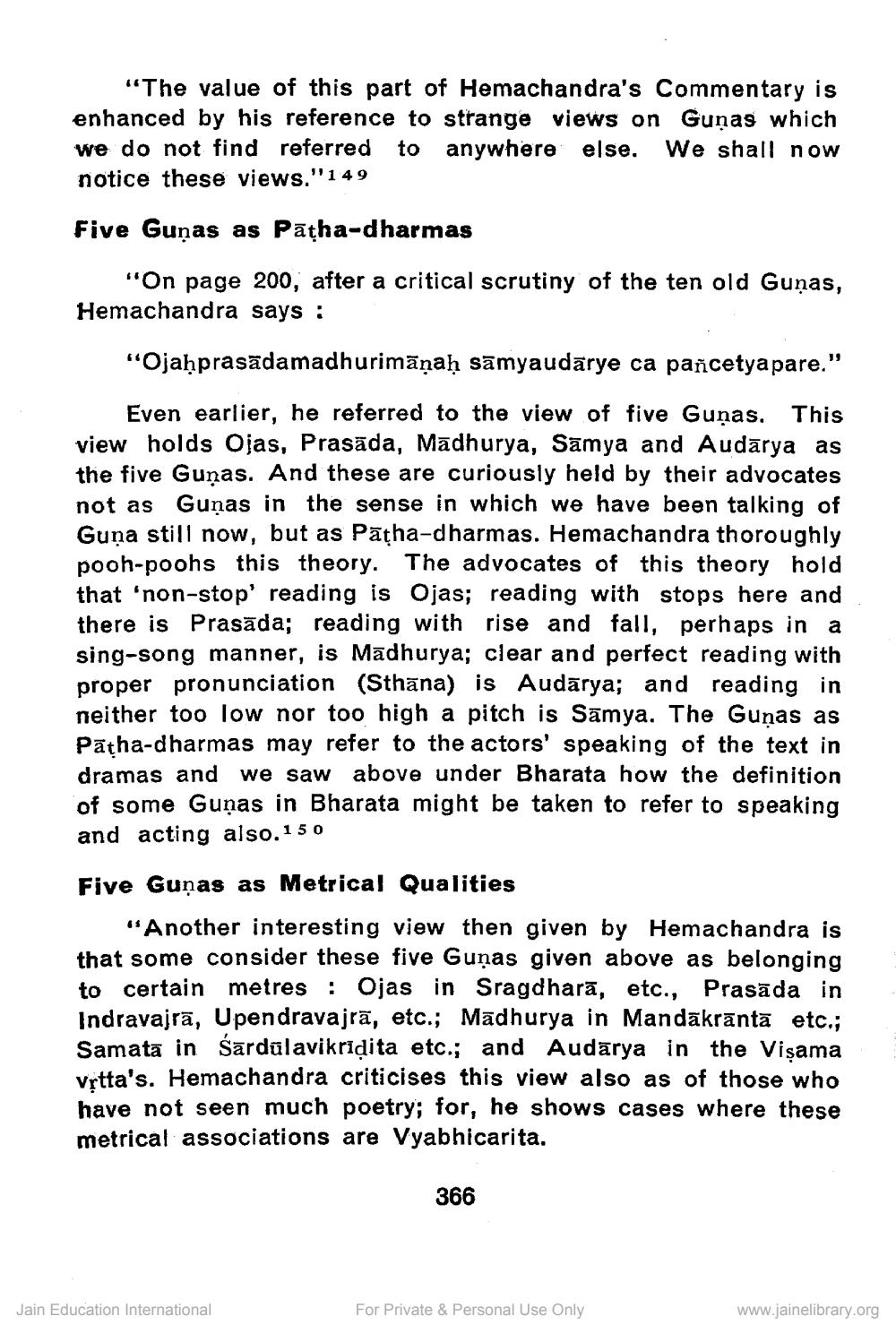________________
"The value of this part of Hemachandra's Commentary is enhanced by his reference to strange views on Guņas which we do not find referred to anywhere else. We shall now notice these views."149 Five Guņas as Patha-dharmas
"On page 200, after a critical scrutiny of the ten old Guņas, Hemachandra says:
"Ojaḥprasādamadhurimāṇaḥ sāmyaudārye ca pancetyapare."
Even earlier, he referred to the view of five Guņas. This view holds Ojas, Prasāda, Madhurya, Sāmya and Audārya as the five Guņas. And these are curiously held by their advocates not as Guņas in the sense in which we have been talking of Guņa still now, but as Pātha-dharmas. Hemachandra thoroughly pooh-poohs this theory. The advocates of this theory hold that 'non-stop reading is Ojas; reading with stops here and there is Prasāda; reading with rise and fall, perhaps in a sing-song manner, is Madhurya; clear and perfect reading with proper pronunciation (Sthāna) is Audārya; and reading in neither too low nor too high a pitch is Sāmya. The Guņas as Pātha-dharmas may refer to the actors' speaking of the text in dramas and we saw above under Bharata how the definition of some Guņas in Bharata might be taken to refer to speaking and acting also.150
Five Guņas as Metrical Qualities
"Another interesting view then given by Hemachandra is that some consider these five Guņas given above as belonging to certain metres : Ojas in Sragdharā, etc., Prasāda in Indravajra, Upendravajrā, etc.; Madhurya in Mandakrantā etc.; Samatā in śārdūlavikriạita etc.; and Audarya in the Visama Vrtta's. Hemachandra criticises this view also as of those who have not seen much poetry; for, he shows cases where these metrical associations are Vyabhicarita.
366
Jain Education International
For Private & Personal Use Only
www.jainelibrary.org




